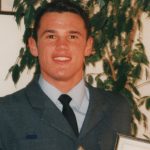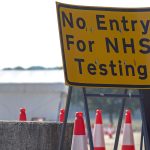Lung abnormalities have been discovered in long COVID patients suffering from breathlessness.
Researchers used the colourless, odourless, tasteless and chemically non-reactive gas xenon to investigate possible lung damage in patients who have not been admitted to hospital but still experience the symptom.
Initial results of the Explain study suggest there is significantly impaired gas transfer in the lungs to the bloodstream in long COVID patients – despite other tests including CT scans coming back normal.
Please use Chrome browser for a more accessible video player
MRI scans detect abnormalities in long COVID patients
Fergus Gleeson, the study’s chief investigator, as well as professor of radiology at the University of Oxford and consultant radiologist at Oxford University Hospitals NHS Foundation Trust, said: “We knew from our post-hospital COVID study that xenon could detect abnormalities when the CT scan and other lung function tests are normal.
“What we’ve found now is that, even though their CT scans are normal, the xenon MRI scans have detected similar abnormalities in patients with long COVID.
“These patients have never been in hospital and did not have an acute severe illness when they had their COVID-19 infection.
COVID-19: First patients arrive at Nightingale surge hub amid ‘period of sustained pressure on services and staff’
COVID-19: UK records 89,176 new cases and 277 more coronavirus-related deaths
COVID-19: Moderna developing single booster jab to protect against Omicron and Delta variants
“Some of them have been experiencing their symptoms for a year after contracting COVID-19.
“There are now important questions to answer. Such as, how many patients with long COVID will have abnormal scans, the significance of the abnormality we’ve detected, the cause of the abnormality, and its longer-term consequences.
“Once we understand the mechanisms driving these symptoms, we will be better placed to develop more effective treatments.”
Radiologists observe how xenon moves from lungs into bloodstream
Patients lay in an MRI scanner and breathed one litre of xenon, which had been altered so it could be seen using MRI.
The gas, which is safe to inhale, behaves similarly to oxygen, allowing radiologists to observe how it moves from the lungs and into the bloodstream.
The pilot study had 36 participants split into three groups. The full Explain study will recruit around 400 participants.
Follow the Daily podcast on Apple Podcasts, Google Podcasts, Spotify, Spreaker
The groups included patients diagnosed with long COVID who had been to long COVID studies and had normal CT scans, people who had been in hospital with coronavirus and discharged more than three weeks ago and who had normal or nearly normal CT scans and who were not experiencing long COVID.
The third group was an age and gender-matched control group who had no long COVID symptoms and had not been admitted to hospital with the virus.
Dr Emily Fraser, respiratory consultant who leads the Oxford Post-COVID Assessment Clinic, said people should not give up on the current exercises and rehab work they are doing.
The study received government funding and is being supported by the NIHR Oxford Biomedical Research Centre. Its findings, which have not been peer-reviewed, were posted on the bioRxiv pre-print server.






















